STVFORUM: Documentary Co-Production: Pathways to Breakthrough from Eastern Narratives to Global Resonance
On the afternoon of June 24, STVFORUM: Documentary Production and Collaboration Forum was held in the Central Hall of the Shanghai Exhibition Center. Industry elites from China and abroad gathered to engage in in-depth discussions on topics such as documentary creation, dissemination, and collaboration. The guests explored innovative approaches, deliberated on the mission of documentary images in the present era, pooled their insights to empower the development of the documentary sector, and actively built platforms for exchange and cooperation to help the industry reach new heights.
Leaders from the National Radio and Television Administration, the Publicity Department of Municipal Committee of CPC, Information Office of Shanghai Municipality, Shanghai Municipal Administration of Culture and Tourism, Shanghai Municipal Administration of Radio and Television, Shanghai Archives Bureau, Shanghai Municipal Bureau of Planning and Natural Resources, Shanghai Office of Local Chronicles, Shanghai Media Group, as well as heads and directors from journalism and communication schools of Shanghai universities and from the film and documentary sectors, together with partners from Real Media Co., Ltd., attended the event.

Exploring New Pathways for Documentary Production
Anchoring High-Quality Development for the Screen
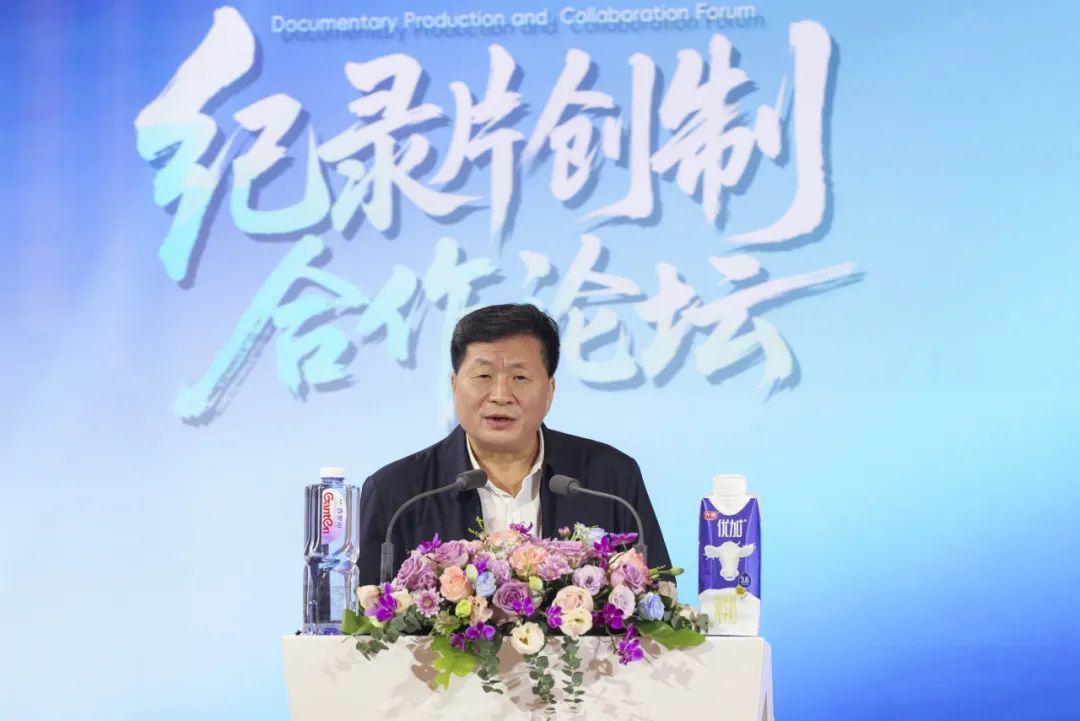
Zhu Yannan mentioned in the report that in the era of multimedia, documentaries are undergoing profound changes and need to grasp the development trajectory from six key dimensions. First, a composite ecosystem of long, medium, short, and micro formats. The spread across multiple platforms is pushing the audiovisual industry into a stage where diverse videos coexist, forming a symbiotic pattern for documentaries. Attention should be given to the differences in narrative and structure across works of varying lengths, and through differentiated arrangements, complementary advantages can be achieved. This is essentially a reflection of societal living conditions in the audiovisual realm. Second, empowerment through new technologies. Technologies such as generative AI, ultra-high-definition, and the metaverse are driving content production iterations, enabling virtual and real-world shooting integration and breaking traditional creative bottlenecks. Third, omnimodal matrix communication. The ubiquity of fixed and mobile terminals and multi-scenario interactions has become the norm for communication, with cross-platform integration becoming a trend. Documentaries need to adapt to communication scenarios and create exclusive functions. Fourth, systematic mechanism transformation. The National Radio and Television Administration emphasizes improving policies for quality creation, driving incubation and innovation. Documentaries should promote policy optimization through their own transformation, constructing an integrated industrial system of content, technology, and talent. Fifth, alignment with Chinese-style modernization. Based on the characteristics of Chinese-style modernization, documentary topics should be close to reality, highlight diversity, and focus especially on cutting-edge technology. The goal is to create a new type of scientific documentary that combines “thought + art” to enhance national scientific literacy. Sixth, creating a new form of human civilization. Chinese documentaries should reflect contemporary values and practices, integrate into the global digital cultural trade system, and build an industry chain of “platforms, networks, micro terminals + multiple institutions” to promote the progress of human civilization through audiovisual language.
Zhu Yannan emphasized that documentaries, as the “art of arts”, possess irreplaceable cultural significance and function. In the omnimedia era, they must shoulder new responsibilities, including full-matrix dissemination and multi-format production. He expressed hope that Shanghai, leveraging its strengths in documentary production and collaboration, would synergize resources to become a new hub leading the industry’s high-quality and innovative development.

Fang Shizhong pointed out in his address that documentaries hold great promise in China’s new era and journey. Shanghai Media Group (SMG) initiated systematic reforms last year with core strategies including “news as foundation” and “culture for revitalization”, focusing this year on strengthening its media core through a “Content Quality Year” initiative. SMG has always valued documentary production, housing China’s largest and most capable provincial-level documentary team – Docu China. As part of reforms, SMG implemented production-broadcast separation for its documentary unit, adopted a professional producer system, and committed to establishing a Shanghai-style documentary production hub.
Fang proposed “four commitments” for documentary production. First, a commitment to excellence for premium content. SMG, rooted in Shanghai while serving the nation and engaging globally, will concentrate on its strengths to develop new styles, producing major thematic works like China Before China and innovative formats like The Wave , helping the world understand China and Shanghai. Second, commitment to empathetic storytelling for global reach. It is to merge truth with narrative through authentic imagery that aligns with international audiences’ cognitive habits. SMG employs public perspectives in co-productions, with outstanding works reaching hundreds of millions overseas. Third, commitment to technology for ultra-HD advancement. Embracing technological trends, SMG allocates resources with internet thinking, launching documentary slots and livestreams. On September 28, it will fully launch Dragon TV’s 4K UHD channel, delivering awe-inspiring experiences with original UHD content. Fourth, commitment to value expansion for brand building. Recognizing Chinese documentaries’ branding potential, SMG integrates original IPs into events and urban consumption scenarios, achieving dual social and economic benefits through branding to foster healthy industry growth.
He urged SMG’s documentary team to uphold the motto “Enlighten Life with Truth” and drive China’s documentary industry through premium quality, global perspectives, ultra-HD technology, and branding strategy.
Diverse Programs Illuminate Collaborative Ecosystem
Full-Chain Empowerment Fuels Documentary Creation
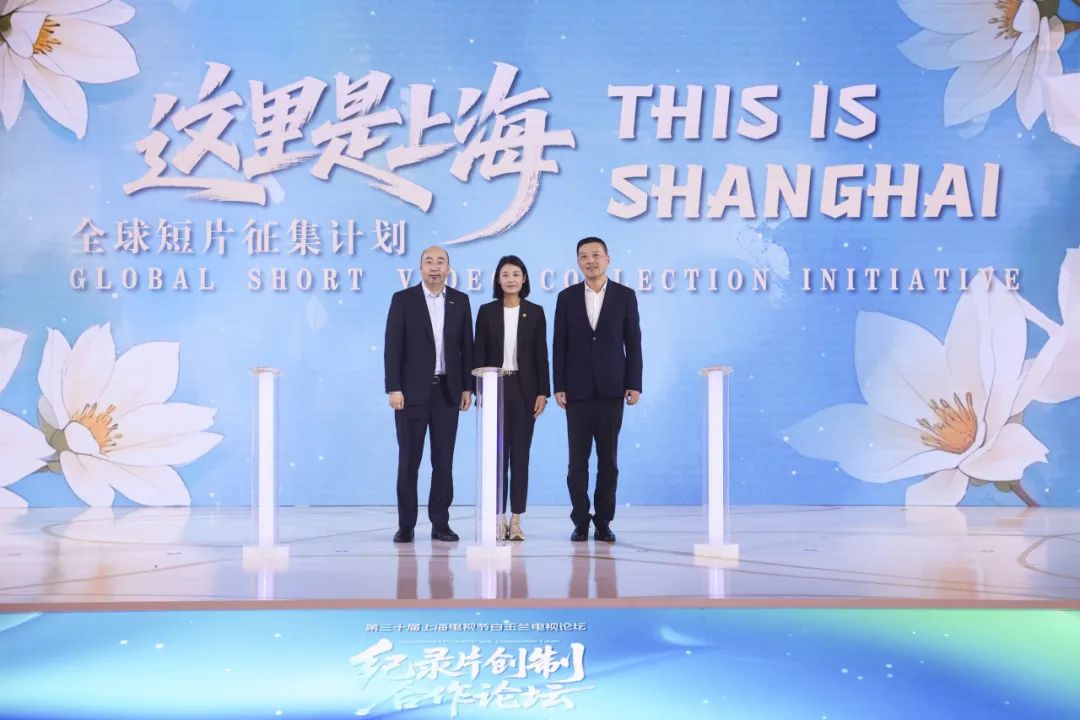
“This is Shanghai” Global Short Video Collection Initiative Launched
Co-sponsored by the Information Office of Shanghai Municipality and SMG’s Docu China, this initiative calls for global submissions of 5-minute micro-documentaries and short videos capturing Shanghai’s urban fabric and humanistic warmth. He Xiaolan, General Manager of Docu China, announced the initiative, urging creators to showcase a “genuine, multidimensional and heartwarming” Shanghai through their lenses, with outstanding works receiving international distribution support.
The launch ceremony witnessed key figures activating the “Image of Light” symbolizing Shanghai’s civic spirit, including Chen Yiqun, Director of the Information Office of Shanghai Municipality, Luo Yi, Member of the Leading Party Members Group, Deputy Director, and Level I Inspector of Shanghai Municipal Administration of Culture and Tourism, and Deputy Director of Shanghai Municipal Administration of Radio and Television Song Jiongming, Deputy Party Secretary, Deputy Director and President of SMG.
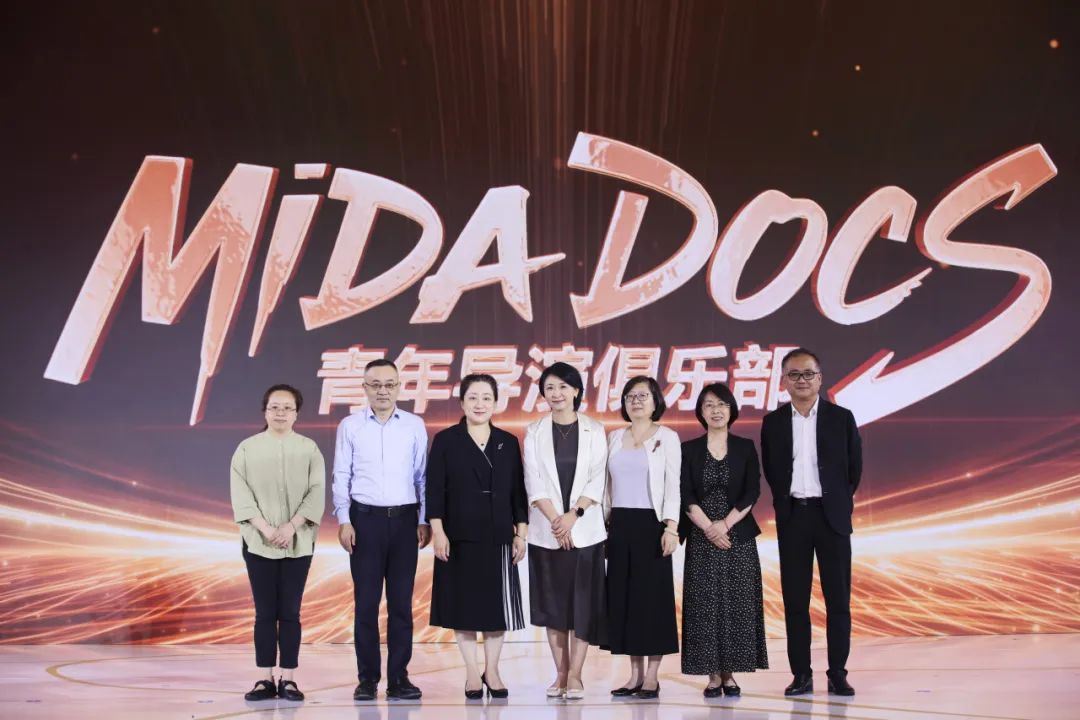
MIDADOCS Young Directors Club Unveiled
Building upon Docu China’s “MIDADOCS” launched in 2006, the club aims to establish a talent incubator for the documentary industry, fostering emerging filmmakers and accumulating future momentum. The unveiling ceremony was jointly conducted by Yin Xin, Deputy Director and Deputy Editor-in-Chief of SMG, Yang Jing, Director of the Public Affairs Department of the Information Office of Shanghai Municipality, You Haiyang, Director of the Radio, Television and Online Audiovisual Program Management Department and Level II Inspector of Shanghai Municipal Administration of Radio and Television along with representatives from academic institutions. Moving forward, the club will collaborate with resources from Fudan University, Tongji University, Shanghai University, and Shanghai University of Political Science and Law to provide young directors with creative support and industry networking platforms.
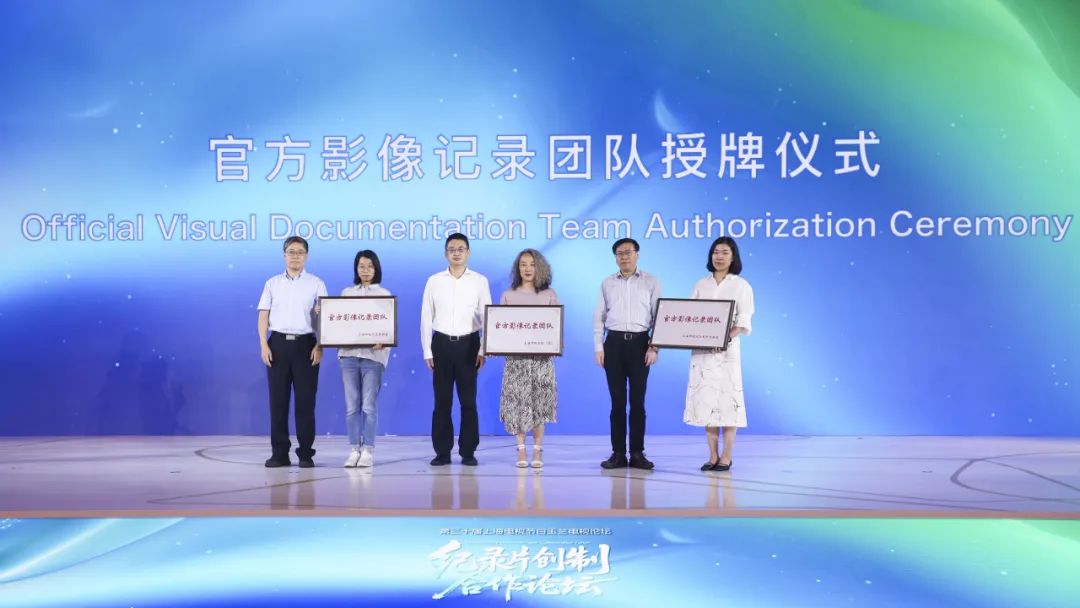
Official Visual Documentation Team Authorization Ceremony
As a documentary production team born and nurtured in Shanghai, Docu China’s works remain intrinsically connected to the city, documenting its development and preserving invaluable visual records. The “Official Visual Documentation Team” title was awarded to three of Docu China’s directors specializing in historical-cultural documentation and urban renewal, namely Xie Shenzhao, Guo Jing, and Dai Chengxian, by Shi Lei, Deputy Director of Shanghai Archives Bureau and Deputy Curator of Shanghai Archives, Xu Mingqian, Deputy Director of Shanghai Municipal Bureau of Planning and Natural Resources, Jiang Fusheng, Deputy Director of Shanghai Office of Local Chronicles. The team will leverage archival and historical resources to develop documentary materials, continuing their effort of preserving visual historical records of Shanghai’s development.
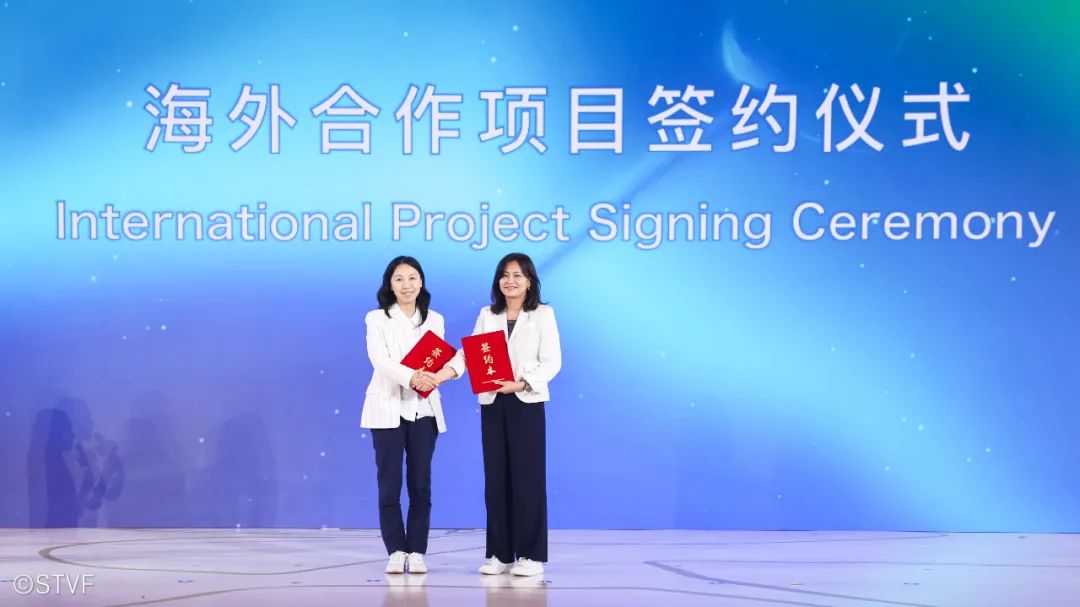
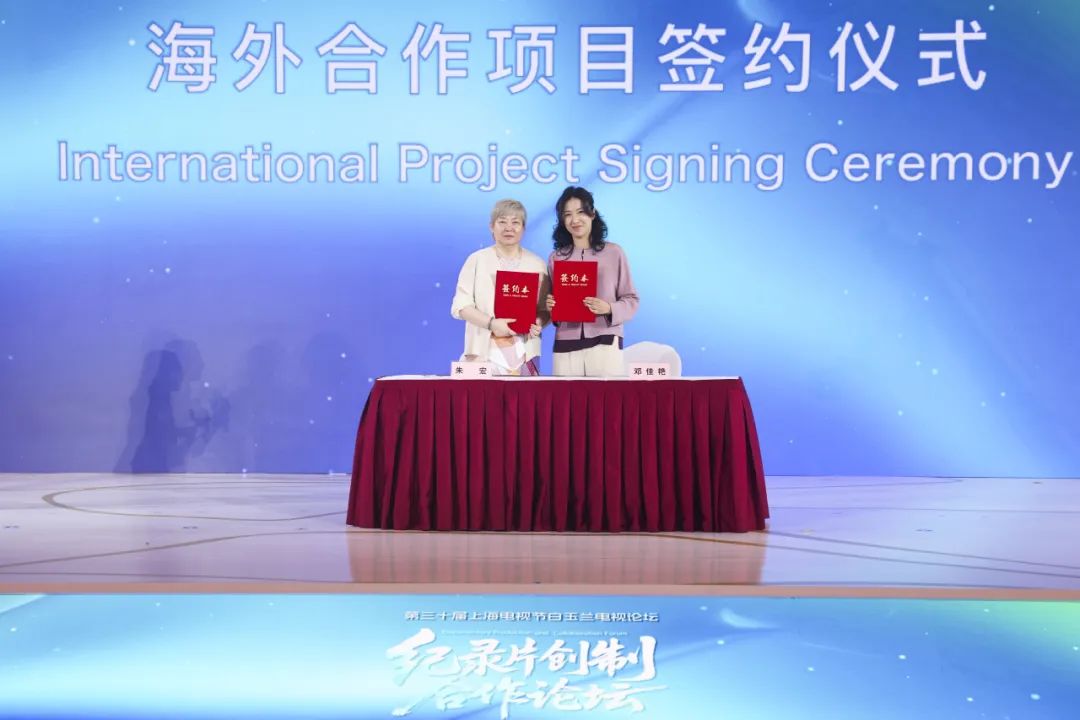
International Cultural Cooperation Agreements Signed
Several international documentary collaboration projects held signing ceremonies on-site. Among them, Docu China and BBC Studios will collaborate on the Hidden Planet project, with Docu China providing the “China Story” thread. Additionally, BBC’s annual blockbuster documentary Dynasties Season will premiere on Shanghai’s Dragon TV “New Documentary” program in October.
The large-scale cultural documentary China’s Culture Journey will officially air on the main channel of Singapore’s MediaCorp. This documentary explores 16 cultural landmarks across China and, from the perspectives of cultural preservation, heritage, and mutual learning through civilization exchanges, it comprehensively showcases the long history of Chinese civilization and the brilliance of its traditional culture. On-site, the documentary production team signed a cultural communication cooperation agreement with Singapore’s MediaCorp.
Roundtable Forum
Eastern Narratives and Global Resonance:
The Dialogue Code in Cross-Cultural Documentary Storytelling
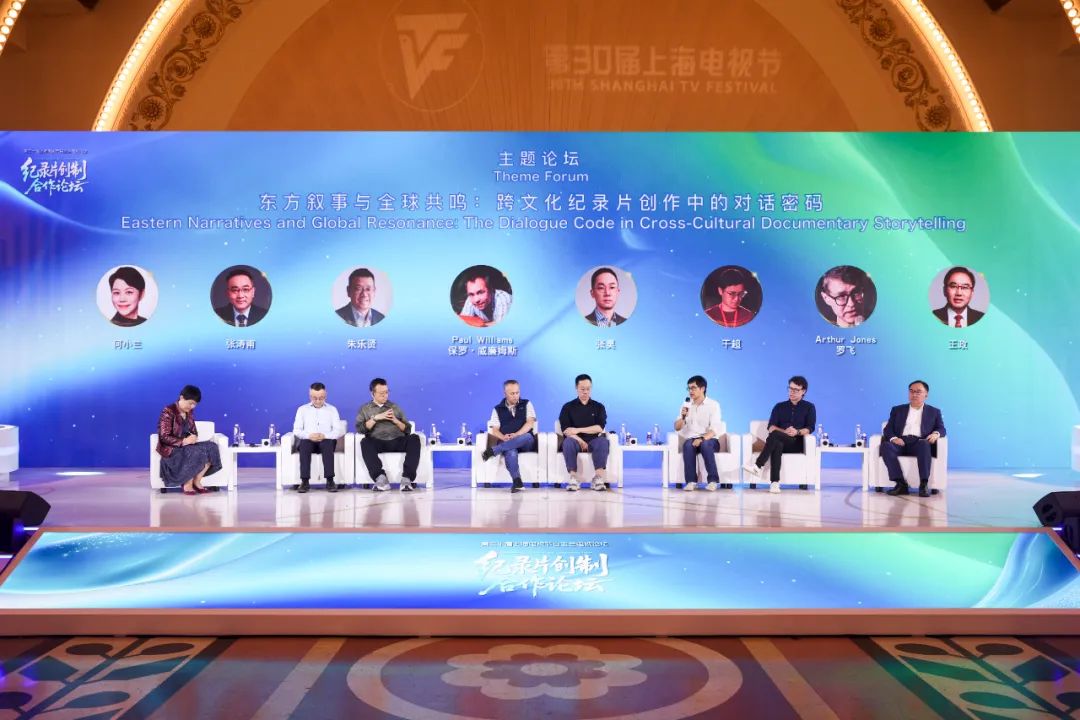
As the torchbearer of civilization, documentaries not only safeguard the uniqueness of their respective cultures but also weave a network of shared human destiny through communication. How to make Chinese cultural symbols shine brighter on the global stage, and how to construct the Chinese narrative and discourse system, are key questions currently being pondered by documentary professionals. Experts, scholars, and creative teams from China’s documentary industry engaged in an in-depth and broad dialogue under the theme of Eastern Narratives and Global Resonance: The Dialogue Code in Cross-Cultural Documentary Storytelling.

Zhang Taofu
School of Journalism, Fudan University
Director, Institute for Global Communication and Integrated Media
Documentaries are a unique, niche, yet elite form of expression that is indispensable in a multi-media ecosystem. Humanity has an innate curiosity and need for understanding the real world. Likewise, the world is curious about China - a country of over a billion people with a unique culture and way of life. Documentaries have the power to break the mold of the “imagined China” and present a more three-dimensional, authentic China.
For example, productions like China before China or the Grand Canal story co-produced with the BBC go beyond history to focus on the people living along the canal today, allowing the world to witness the complexity of modern China. The key to cross-cultural communication lies in “seeking common ground while respecting differences” - amplifying the fundamental truth, so that values and cultural differences can blend upon this foundation. Only then can documentaries have a greater impact.
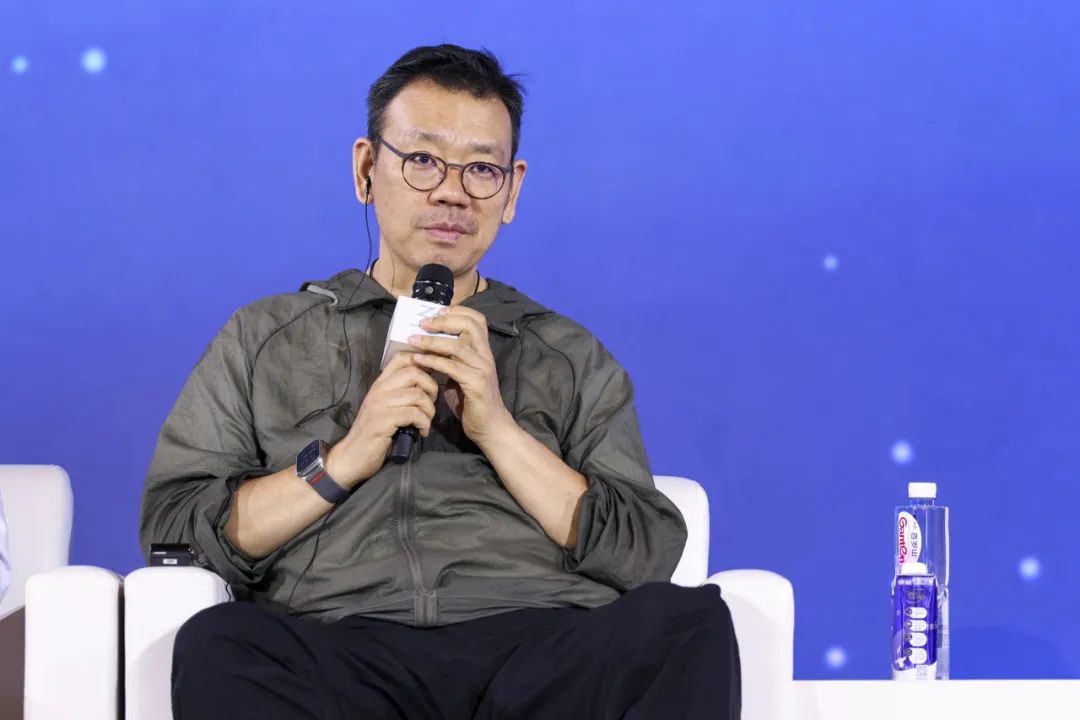
Zhu Lexian
Head of Obsidian Documentary Studio , WeTV
What kind of documentaries are suitable for international dissemination? Is the goal to sell content or to promote cultural exchange? Are nature-focused or culture-focused topics more appropriate? Can domestic and international communication be unified? For instance, when we sell a program to the BBC, who is actually watching it? To answer these questions, we must first understand the perspectives of Western audiences and produce targeted content to avoid fragmentation between domestic and international narratives.
The Western market places a strong emphasis on the personal style of hosts and prefers narratives driven by conflict, which contrasts with the “harmonious storytelling” traditionally found in Chinese documentaries. The industry needs to engage in joint research and co-productions with international teams to accurately grasp how different markets receive content. This approach allows internationalization to evolve from mere technical collaboration into a proper channel for cultural dialogue, rather than simply exporting content.

Paul Williams
Producer, BBC Studios Natural History Unit
In the West, it’s easy to tell superficial stories, but only through collaboration with locals can we find authentic narrative foundations. Chinese production teams demonstrate exceptional filming techniques - both The National Parks of China series and A Bite of China are outstanding works. Western storytelling emphasizes drama, conflict, and fast pacing, while Eastern approaches excel at portraying humanity’s connection with nature. These perspectives are complementary.
China possesses boundless potential for compelling stories. The intrinsic relationship between Chinese people and nature is what I aspire to capture in documentaries, showing the world the authentic China. We look forward to collaborating with Chinese partners through the “Planet” Series to showcase China’s cultural and natural landscapes globally.

Zhang Hao
Deputy Director & Content Supervisor, Bilibili Documentary Center
Documentaries remain a relatively niche segment in the global film and television industry, with investment returns, audience scale, and commercial potential lagging behind movies, TV dramas, and variety shows. This isn’t unique to China – it’s a worldwide reality. When producing content, it’s challenging to simultaneously cater to domestic and international markets - each project requires careful prioritization. However, Chinese documentary makers demonstrate unparalleled dedication, with an innovative spirit and work ethic unmatched elsewhere. China’s wealth of compelling subjects and profound human stories are sources that deserve genuine pride. But we still lack iconic presenters like David Attenborough, and there are gaps in industrial technology - for instance, the specialized lenses used in Planet Earth IV represent techniques we need to master. By elevating our standards, we can gain more market recognition.

Gan Chao
General Manager, Tianhai Pictures
Chinese narratives are closely tied to the rich cultural and value traditions of the Chinese people. We place greater emphasis on long-term observation of society and on exploring the connection between individual destinies and societal fate, rather than judging people or social phenomena through a simplistic black-and-white lens.
In recent years, our documentaries have increasingly aligned with global standards in terms of texture, visuals, narrative rhythm, and contemporary relevance. This allows Eastern works to communicate Chinese cultural perspectives on the international stage. Chinese documentary filmmakers must harbor a deep love for their country and nation. Whether dealing with history or the present, we must immerse ourselves deeply in society. We cannot be armchair theorists; as documentarians, we must walk among the rhythm of our times to explore the most urgent questions of this era and to touch the most tender parts of people’s hearts. Only by going deep enough can we create excellent works to share with the world.

Luo Fei
Director, Shanghai Oulai Cultural and Artistic Exchange Co., Ltd.
Foreign audiences are interested in Chinese stories, but we need to represent the true China. Documentaries are a universal language, but not all Chinese documentaries achieve this; we need to find common ground. Foreign platforms often struggle to accept stories that lack conflict or negativity - stories with conflict are much easier to sell. For example, Wanping Road No. 600 on Bilibili, where the protagonist acknowledges and confronts their problems, is a perfect example for international audiences.
We can’t always rely on comparing the old and the new, as that can come off like a promotional video. We need stories with depth, ones that explore the complexity of human nature. Additionally, China still lacks internationally recognized documentary hosts. Nurturing hosts with both a sense of humor and a global perspective is something worth investing in as a long-term project.

Wang Zheng
General Manager, YoyWow
Chinese documentaries have excellent content, but even fine wine can go unnoticed if it’s hidden away. We’re now in an era of AI and big data, where distribution can be more targeted than ever. By leveraging viewer profiles and audience data, we can pinpoint cultural preferences in different countries and regions - for example, analyzing how receptive Western audiences are to stories about Chinese technology, or identifying what elements of folklore resonate most with Southeast Asian markets. This allows us to tailor our distribution strategies with greater precision.
Having worked in global distribution of Chinese-language content for over a decade, we’re now looking to deepen our collaboration with producers by getting involved earlier - right from the topic selection and planning stages. By using data to inform content creation, we aim to help Chinese documentaries go global in a way that preserves their cultural essence while also aligning with international viewing habits.



